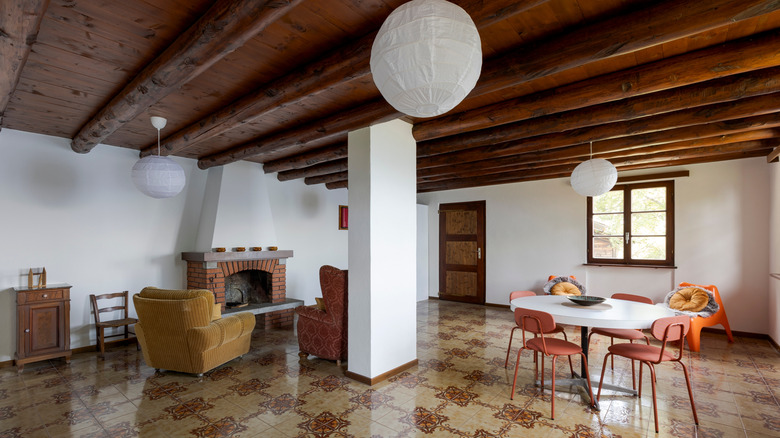The Simple Paint Color That Can Unite A Mismatched Home
If your home isn't a new build, it's more than likely that there are a few different styles throughout the space. Different decades had different trends, and different renovations done in those different decades can lead to a jumble of styles that don't fully read as cohesive. While this mashup of varied textures, accents, and vibes can act as an excellent backdrop for some eclectic decor, other times, it can just feel disjointed. Thankfully, there's a solution that only requires one simple change: a coat of white paint.
White paint might read as boring or basic, but if you're dealing with a space that needs to be brought together, an overall wash in the same simple color might be just what you need. Paneling from the '80s, exposed brick that's original to the home, and plain drywall from your most recent renovation will all feel like they belong in the same room with a coat of white paint, and the differing textures will keep the space from feeling sterile or plain.
With that being said, you don't have to sacrifice your colorful palette entirely. Once you paint your surfaces, you'll be left with a base that's much easier to build off of. Thanks to the simplicity, you'll have much more freedom to incorporate bold colors, textures, and patterns in the form of furniture, decor, and accents.
How to choose a paint color
Picking the right white paint for your space isn't as simple as it sounds. There are hundreds of shades to choose from, and even the most subtle variations can have a major impact on the feel of your room. The first consideration you make should be the undertone. Cool whites are perfect for those who want their space to feel bright and refreshing, especially if you already lean towards a cooler palette of grays and blues in your decor. Warm whites are on the other side of the spectrum, and their undertones bring in a cozier vibe and can be the perfect complement to natural materials and other warm shades. Pure whites don't have much of a detectable undertone, making them more flexible, but they carry the risk of reflecting other colors in the room.
If you're not too keen on the idea of a white shade, using another neutral color throughout the space can help to achieve a similar effect. Painting surfaces the same shade of beige, gray, or a blend of the two will tone down a mismatched room without the intense airiness of a white. Those who aren't afraid to create a bold look could even try out the color drench paint trend with a more saturated shade. As long as the same color is covering the room, different textures and materials will feel more like an intentional choice than an accidental hodgepodge of accents.

